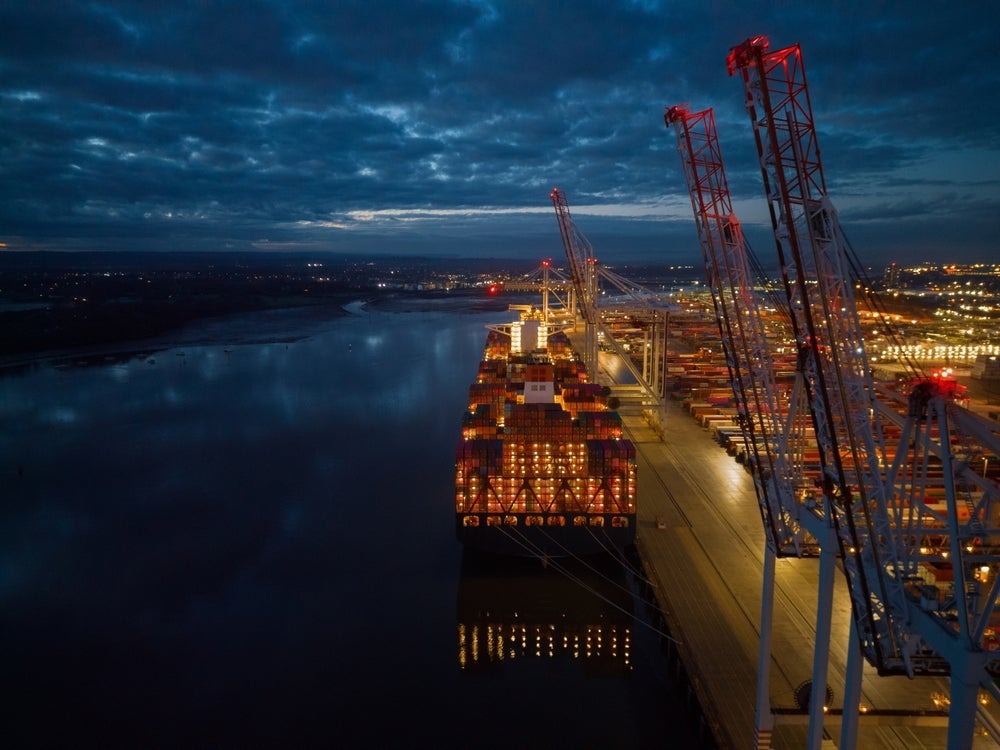Comment
Shore power is plugged in for change
Christoffer Ahlström, technical director at Manta Marine Technologies, says that it’s time to increase the pace of shore power systems on vessels.

A lack of available port infrastructure has been the go-to reason for delaying shore power retrofits on vessels. As more ports add the option to plug in and regulation of at-berth emissions increases, it’s time to increase the pace of shore power systems on vessels.

Christoffer Ahlström, technical director, Manta Marine Technologies
FuelEU Maritime has dominated the conversation around shore power recently, as its 2030 deadline for large ships to plug into the local grid at major European ports draws closer. But shore power rules are on the rise around the world. As they spread, so too have the opportunities for fuel and cost savings.
Regulation as a driver of environmental progress is nothing new to shipping. In the case of shore power, the social pressure to decarbonise is joined by the powerful will of local governments and communities to slash air pollution around ports, unlocking the health and development benefits of breathing clean air.
After all, shore power allows a ship to turn off the auxiliary engines, which would normally provide the electricity the vessel needs while at berth. This saves fuel and eliminates whatever emissions the engine would have produced, from CO2 to particulate matter and NOx.
Expanding shore power markets
Driven by these dual health and environmental incentives, the FuelEU regulations (Article 6) and the Alternative Fuel Infrastructure Regulation (Article 9) will be applied to all EU ports with shore power facilities from 2035 for seagoing container and passenger ships.
In the US, the California Air Resources Board’s (CARB) Ocean-Going Vessels At Berth Regulation has applied to container, reefer, and cruise ships since 2023, and will add ro-ro vessels and some tankers in 2025. China has its own shore power rules and extensive connection capacity.
DNV’s Alternative Fuel Insights platform lists 169 shore power connections at ports around the world, currently clustered in North America, China, and Europe. Port sustainability pledges and net-zero greenhouse gas ambitions make it clear that many more ports are soon to follow. While specific regulations have provided the firm market signals ports required to invest in shoreside infrastructure, the compliance benefits to the ship extend well beyond port limits.
The EU Emissions Trading System (ETS) and the prospect of a global market-based measure from the International Maritime Organization (IMO) have put total fuel consumption in the spotlight. A levy on fuel or emissions brings a simple and powerful commercial incentive to use less fuel.
Cost savings
While not historically cheap, current bunker prices can leave the total cost of using grid electricity in-port too close to the cost of running auxiliary engines, so long as the price paid by the environment can be ignored.
Initiatives such as Italy’s recent €570m funding to exempt electricity provided to ships in-port from certain domestic power charges show that regulators are aware of and addressing this near-term challenge which is apparent in some areas. By increasing potential savings, ships will be drawn to more carbon-efficient and less polluting grid power.
As shipping moves to more expensive fuels, whether they be greener biofuels and e-fuels, or increasingly-taxed fossil fuels, potential savings from plugging in will only grow.
Some regulations allow for ships to use zero-emissions fuels in port instead of shore power, but even the greenest ships of the future will compare the cost of generating power from pricey zero-emissions fuels against the local grid and its economies of scale.
Investment in shore power technology
For ports, there is evidence that shore power is much more than a box-ticking exercise. California’s Port of Hueneme suffered a rain and flooding event in December 2023 that caused extensive damage to its shore power system, leaving the infrastructure beyond repair.
Despite securing an alternative means for visiting ships to meet CARB at-berth emissions regulations, Hueneme is in the process of designing a new and improved shore power system, demonstrating its supremacy as a means of compliance.
For shipowners, the opportunities to use shore power connections are growing, regulatory pressure is growing, and the clock is ticking. The five-year dry-docking cycle is an important aspect of owning and operating a ship, timing investments and upgrades alongside special surveys.
While retrofitting a shore power connection does not require drydock in most cases, the upcoming five-year countdown to wider shore power requirements in the EU should focus the mind of company leadership and fleet managers alike.
As the industry looks to meet the myriad global and regional regulatory changes over the next five years, shore power offers ship owners and operators a tried and tested route to meet this challenge – advancing our shared goals of greater efficiency and sustainability.